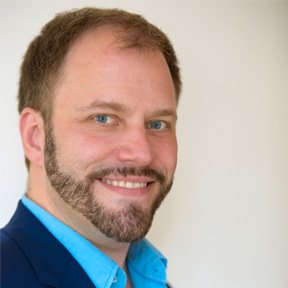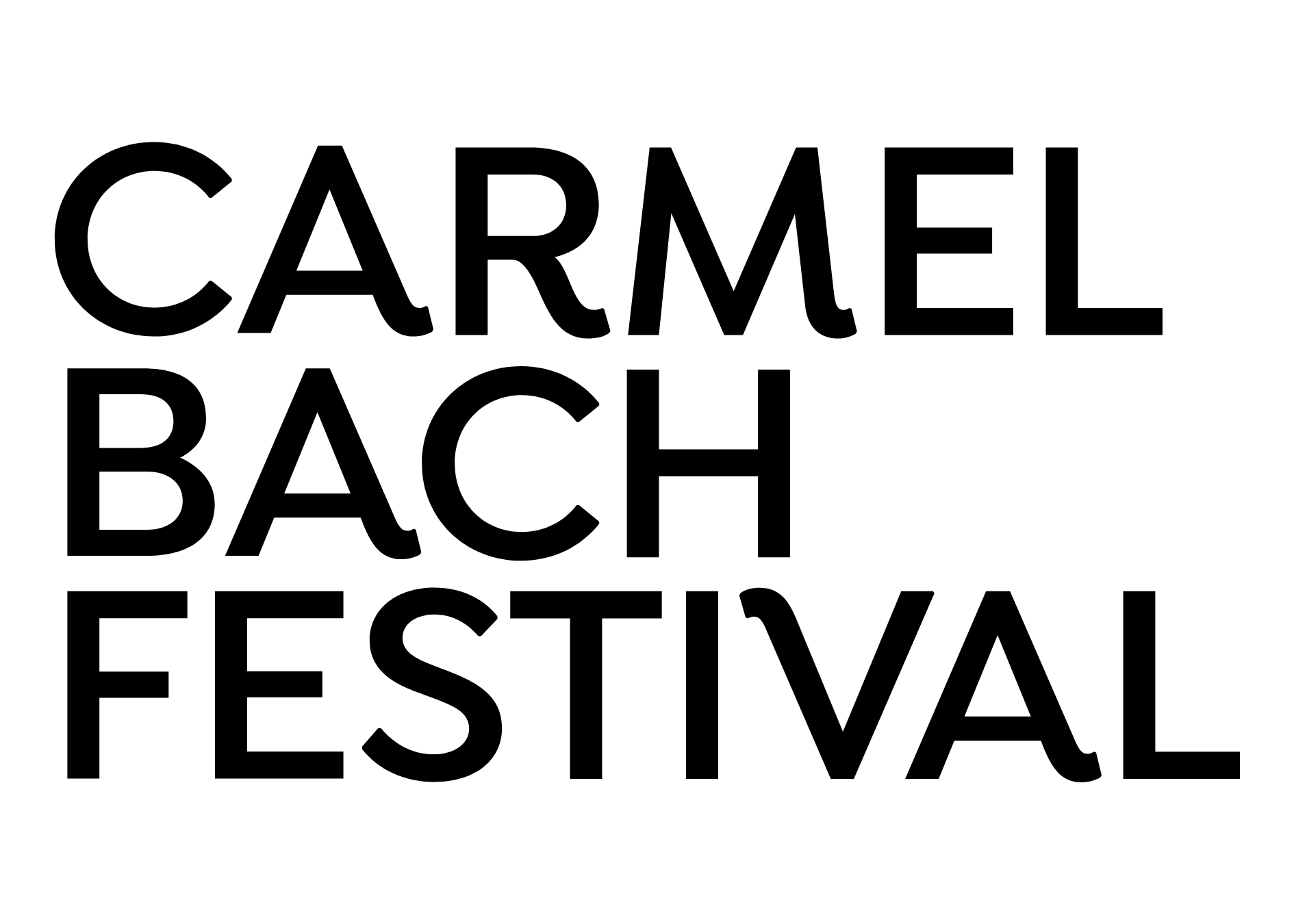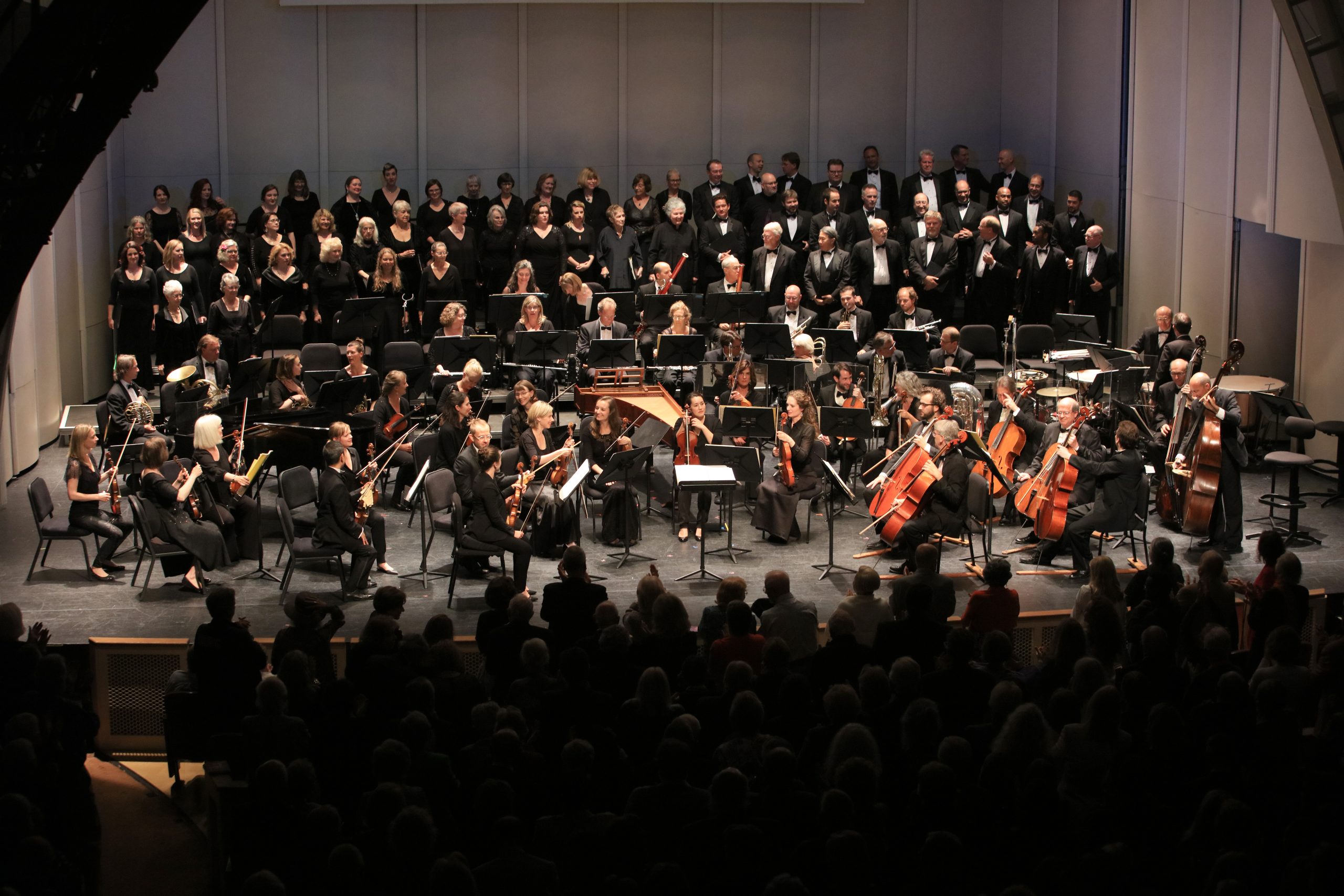Featuring
-

Meg Bragle
Mezzo-soprano Soloist
Widely praised for her musical intelligence, American mezzo-soprano Meg Bragle is quickly earning an international reputation as one of today’s most gifted and versatile mezzo-sopranos.
Frequently a featured soloist with Sir John Eliot Gardiner and the English Baroque Soloists, she made her BBC Proms debut with them singing Bach’s Easter and Ascension Oratorios, has performed with them at the Leipzig Bachfest and the Prague Spring, Luzerne, Aldeburgh and Brighton festivals, and has made four recordings with the group including the recently released Bach B Minor Mass.
Meg has sung in North America and Europe with the Orpheus Chamber Orchestra, the Orchestra of St. Luke’s, Orchestre Révolutionnaire et Romantique, Tafelmusik Baroque Orchestra, Orchestra of the Age of Enlightenment, Les Violons du Roy, Apollo’s Fire, and the Dunedin Consort. She has also appeared with many symphony orchestras in the US and Canada including the Houston, Indianapolis, Pacific, and Colorado Symphonies; the National Arts Center Orchestra, and a series of concerts with the Calgary Philharmonic including Handel’s Messiah and Beethoven’s Symphony No. 9.
Highlights of her 2016/17 season include appearances with Milwaukee Symphony, Cincinnati Symphony, St. Paul Chamber Orchestra, American Bach Soloists, Dunedin Consort, Orchestra of the Age of Enlightenment, and Early Music Vancouver. Meg also performs this season at the Winter Park, Carmel Bach, and London Baroque Festivals, with Voices of Music, and Catacoustic Consort. Other recent highlights include Bruno Moretti’s Vespro with New York City Ballet, tours of Bach’s St. Matthew Passion and Christmas Oratorio with the Netherlands Bach Society and Bach’s Lutheran Masses with the Orchestra of the Age of Enlightenment.
Her recent opera roles include Idamante in Mozart’s Idomeneo, Dido and the Sorceress in Purcell’s Dido and Aeneas, Dardano in Handel’s Amadigi, Amastre in Handel’s Serse, Speranza in Monteverdi’s L’Orfeo, Ippolita in Cavalli’s Elena, and Elpina in Vivaldi’s La Fida Ninfa.
In addition to those with the English Baroque Soloists, she has made several recordings with Apollo’s Fire: Mozart’s Requiem (Koch), Handel’s Dixit Dominus and Ode for the Birthday of Queen Anne (Avie), and Monteverdi’s Vespro della Beata Vergine (Avie), and L’Orfeo (Eclectra). Other recordings include Cozzolani’s Vespro della Beata Vergine and Messa Paschale with Magnificat (Musica Omnia), Music of Medieval Love with New York’s Ensemble for Early Music (Ex Cathedra), Toby Twining’s Chrysalid Requiem (Cantaloupe), Anthony Newman’s Requiem (Khaeon World Music) and Copland’s In the Beginning with the late John Scott and the Men and Boy Choir of St. Thomas Fifth Avenue and the Oratorio Singers of Charlotte on their own labels.
-

Clara Rottsolk
Soprano Soloist
Soprano Clara Rottsolk has been lauded by The New York Times for her “clear, appealing voice and expressive conviction” and by The Philadelphia Inquirer for the “opulent tone [with which] every phrase has such a communicative emotional presence.” A brilliant and accomplished concert artist, her solo appearances have taken her across the United States, the Middle East, Japan, and South America.
“With a silken voice capable of extraordinary power” (San Diego Union-Tribune), she has appeared as a soloist with orchestras including Baltimore Symphony, American Bach Soloists, Santa Fe Pro Musica, the American Classical Orchestra, Richmond Symphony, Bach Collegium San Diego, Virginia Symphony, New Mexico Philharmonic, Pacific Symphony, Atlanta Baroque Orchestra, Trinity Wall Street, and Seattle Baroque Orchestra, under the direction of conductors including Grete Pedersen, Nicholas McGeegan, Jeffrey Thomas, Dinis Sousa, Stephen Stubbs, David Danzmayr, Joshua Rifkin, Ruben Valenzuela, Chia-Hsuan Lin, Timothy Nelson, and Andrew Megill.
Also dedicated to chamber and recital repertoire, she performs with ensembles including Les Délices, TENET, Piffaro the Renaissance Wind Band, Colorado Bach Ensemble, House of Time, and Pegasus Baroque. Frequently in demand as a festival soloist, her credits include Carmel Bach, Berkeley Early Music, Montréal Baroque, Spoleto USA, Winter Park Bach, Seattle Bach, St. Louis Bach, Indianapolis Early Music, Whidbey Island Music, and Boston Early Music Fringe.
Her solo recordings can be found on Chandos, Analekta, MSR Classics, and independent labels. Currently she is based in Philadelphia and teaches voice at Swarthmore, Haverford and Bryn Mawr Colleges.
-

Thomas Cooley
Tenor Soloist
Minnesota-born tenor Thomas Cooley has established a reputation on both sides of the Atlantic — and beyond — as a singer of great versatility, expressiveness, and virtuosity.
Possessing a lyric tenor voice of great flexibility, dynamic range, and precision, he has appeared with such conductors as Helmuth Rilling, Donald Runnicles, Osmo Vänskä, Eji Oue, Michael Tilson-Thomas, Wolfgang Sawallisch, Nicholas McGegan, Robert Spano, David Robertson, Carlo Rizzi, Franz Welser-Möst, Manfred Honneck, Michael Schønwandt, Gil Shohat, and Kryzstof Penderecki. His repertoire on the concert stage comprises works such as Beethoven’s Missa Solemnis, Berlioz’s Requiem, Nuits d’été and L’enfance du Christ, Haydn’s Seasons, Stravinsky’s Les Noces, Handel’s Messiah, Mendelssohn’s Lobgesang, Kodály’s Psalmus Hungaricus, Honneger’s King David, Mozart’s Requiem, Elgar’s Dream of Gerontius, Bernstein’s Candide, and Penderecki’s Credo. He is frequently invited to perform in Beethoven’s Ninth Symphony, a role that has taken him to Singapore, Japan, Taiwan, Germany, Italy, Spain, and throughout the United States. In the Baroque repertoire he is a well-known interpreter of the works of Bach and Handel, most especially in the role of the Evangelist in Bach’s Passions and in the great oratorios of Handel.
Recent and upcoming appearances of note include Beethoven’s Ninth Symphony with the Baltimore Symphony Orchestra and the Milwaukee Symphony; Britten’s War Requiem with the Indianapolis, Atlanta, and Oregon Symphonies; Handel’s Messiah with the Oregon, Houston, and Charlotte Symphonies as well as the Calgary Philharmonic and National Symphony Orchestra; “ Peter Quint” in Britten’s Turn of the Screw with the St. Paul Chamber Orchestra; Bob Boles in Britten’s Peter Grimes with the St. Louis Symphony in Carnegie Hall; the title role in Handel’s Samson with the American Classical Orchestra at Alice Tully Hall (Nicholas McGegan conducting); the world premiere of Christopher Theofanidis’ Creation Oratorio with Atlanta Symphony; “Tristan” in Frank Martin’s Le vin herbé with Bergen National Opera; “Crown Prince” in Kevin Puts’ Silent Night with Cincinnati Opera; “Acis” in a new production of Handel’s Acis and Galatea and L’Allegro with the Mark Morris Dance Group; Bach’s St. Matthew Passion with Seattle Symphony and St. John Passion with Pacific Musicworks and the Pittsburgh Symphony; and performances at the Oregon and Carmel Bach Festivals.
As Artist in Residence with Chicago’s Music of the Baroque, Cooley performs Monteverdi’s Vespers, Handel’s Judas Maccabaeus, and a program of Bach Cantatas this season.
-

Dashon Burton
Bass-baritone Soloist
Hailed as an artist “alight with the spirit of the music” (Boston Globe), three-time Grammy-winning bass-baritone Dashon Burton has built a vibrant career, performing regularly throughout the U.S. and Europe.
Burton’s 2024/25 season begins with Beethoven’s Symphony No. 9 with the Los Angeles Philharmonic at the Hollywood Bowl, led by Gustavo Dudamel. Highlights of the season include returns to the Milwaukee Symphony for his second season as Artist-in-Residence, featuring Mahler’s Lieder eines fahrenden Gesellen and later Bach’s Ich habe genug, both conducted by Ken-David Masur. He makes his Boston Symphony subscription debut with Michael Tilson Thomas’ Walt Whitman Songs, conducted by Teddy Abrams, and his Toronto Symphony debut in Mozart’s Requiem under Jukka-Pekka Saraste. Additional performances include Brahms/Glanert’s Serious Songs and Mozart’s Requiem with the St. Louis Symphony under Stéphane Denève; Mozart’s Requiem with the Minnesota Orchestra and Thomas Søndergård; and Handel’s Messiah with the National Symphony, led by Masaaki Suzuki.
During the 2023/24 season, Burton collaborated frequently with Michael Tilson Thomas, including performances of Beethoven’s Symphony No. 9 with the San Francisco Symphony and Copland’s Old American Songs with the New World Symphony. He also sang Bach’s Christmas Oratorio with the Washington Bach Consort, Handel’s Messiah with both the St. Paul Chamber Orchestra and the Philadelphia Orchestra, and performed the title role in Sweeney Todd at Vanderbilt University. With the Cleveland Orchestra, he appeared in a semi-staged production of Mozart’s The Magic Flute. As the Milwaukee Symphony’s Artist-in-Residence, Burton joined Ken-David Masur for three subscription weeks.
A multiple award-winning artist, Burton earned his second Grammy Award in 2021 for Best Classical Solo Vocal Album for his role in Dame Ethel Smyth’s The Prison with The Experiential Orchestra (Chandos). He won his first Grammy in 2013 as an original member of the groundbreaking ensemble Roomful of Teeth for their debut album of new commissions. In 2024, he earned his third Grammy for their latest recording, Rough Magic, featuring works by Caroline Shaw, William Brittelle, Peter Shin, and Eve Beglarian.
Burton’s discography also includes Songs of Struggle & Redemption: We Shall Overcome (Acis); the Grammy-nominated recording of Paul Moravec’s Sanctuary Road (Naxos); Holocaust, 1944 by Lori Laitman (Acis); and Caroline Shaw’s The Listeners with the Philharmonia Baroque Orchestra. His album of spirituals received critical acclaim, with The New York Times calling it “profoundly moving…a beautiful and lovable disc.”
Burton holds a Bachelor of Music degree from Oberlin College and Conservatory and a Master of Music degree from Yale University’s Institute of Sacred Music. He is currently an assistant professor of voice at Vanderbilt University’s Blair School of Music.
Dashon Burton appears by arrangement with Colbert Artists Management, Inc., 307 Seventh Avenue, Suite 2006, New York NY 10001.
Forays into more varied repertoire have included his performances of Michael Tippet’s A Child of our Time at Harvard, Barber’s Dover Beach, and Hans Eisler’s Ernste Gesaenge with A Far Cry chamber orchestra in Boston, Copland’s Old American Songs with the Kansas City Symphony, Schubert’s Die Winterreise with string quartet, and performances and recording of Craig Hella Johnson’s Considering Matthew Shepard with the vocal group Conspirare. Last season, he premiered Paul Moravec’s new oratorio, Sanctuary Road, at Carnegie Hall and performed David Lang’s The Little Match Girl Passion at the Metropolitan Museum of Art in New York.
Dashon’s 2018/19 season begins with his debut at the Salzburg Festival in Salomé. He sings Beethoven’s Symphony No. 9 with the National Arts Centre Orchestra in Ottawa and with the Cincinnati Symphony, Dvoark’s Stabat Mater with the Houston Symphony, Mozart’s Coronation Mass et al. with Philharmonia Baroque, the C minor Mass with the Grand Rapids Symphony, and the Requiem with the Bethlehem Bach Festival and Los Angeles Chamber Orchestra. He sings also Haydn’s Creation and the role of Zebul in Handel’s Jeptha, the Verdi Requiem, Moussorgsky’s Songs and Dances of Death, and returns to the Cleveland Orchestra for a subscription week of Schubert’s Mass in E flat Major in May. December finds him performing with the contemporary vocal ensemble Roomful of Teeth, of which Dashon is an original member, at Paris’Théatre de la Ville in Peter Sellars’ production of Claude Vivier’s Kopernikus, un ritual de mort.
Burton returns to Trinity Wall St. for a Baroque recital this season. For his other recitals in Boston and San Francisco, the program is based on his recording Songs of Struggle and Redemption: We Shall Overcome, singled out by the New York Times as “profoundly moving…a beautiful and lovable disc” in its May 2016 Classical Play list.
Burton’s opera engagements include singing Sarastro in Die Zauberflöte in Dijon and Paris, and the role of Jupiter in Rameau’s Castor and Pollux with Christoph Rousset and Les Talens Lyriques. He has toured Europe in the St. John Passion with Christoph Prégardien’s Le Concert Lorraine, and in Italy with Maasaki Suzuki and the Yale Schola Cantorum in the St. Matthew Passion, a work he also sang on tour in the Netherlands with the NNSO.
Dashon has won prizes from the ARD international Music Competition and the International Vocal Competition in ‘s-Hertogenbosch, and from the Oratorio Society of New York and the Bach Choir of Bethlehem’s Competition for Young American Singers. He graduated from the Oberlin College Conservatory of Music and received his Master of Music degree from Yale University’s Institute of Sacred Music.
|






